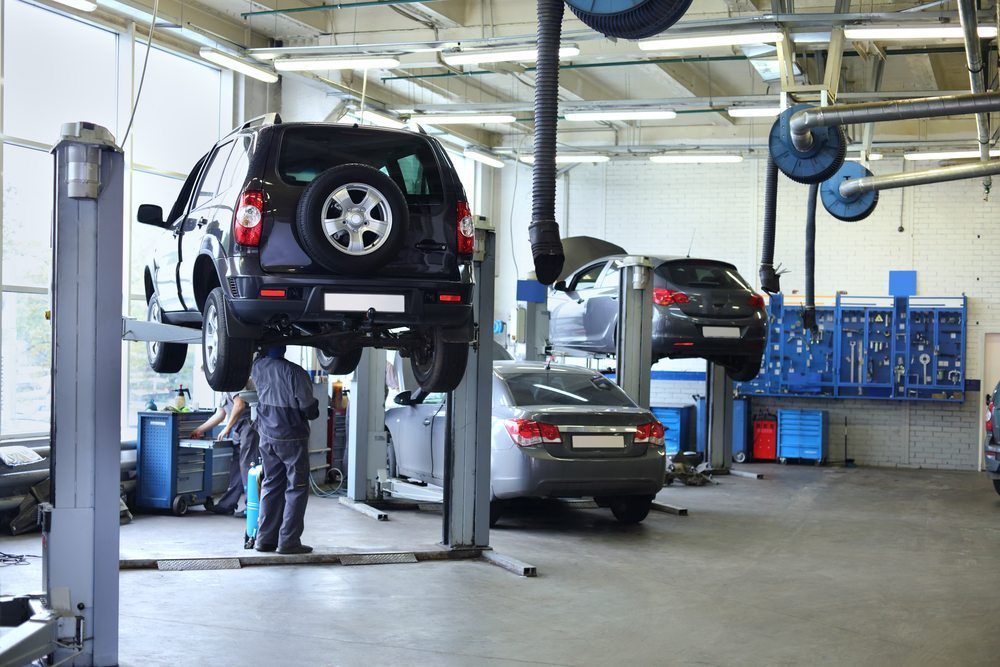Follow this framework to make sure your oversight of your dealership departments’ compliance efforts is thorough. BY TERRY DORTCH
Compliance with federal and state laws and regulations affects several departments in an auto dealership. However, oversight of overall regulatory compliance must be driven by the dealer or GM, or a dealership’s risk of a costly and/or dangerous violation increases.
In this article, I want to present a framework for administering an auto retailer’s total compliance from the head office level, recognizing that specific compliance duties will be policed and handled by individual departments.
Broadly speaking, today’s federal (and often state) laws and regulations govern a dealership’s:
- Sales and financing, pertaining to advertising, sales, consumer financing and aftermarket sales practices.
- Privacy and data security, pertaining to both the customer’s and employees’ information.
- Service and body shop operations, including OSHA regulations that pertain to worker safety and health; and OSHA/EPA regulations that pertain the storage, handling and disposal of materials classified as hazardous, including air bags.
- Human resources, pertaining to Equal Employment Opportunity Commission employment, hiring, harassment and discrimination practices and policies.
Compliance Is A Top-Down Activity
While every employee has a role to play in a dealership’s legal and regulatory compliance, commitment to operating a compliant business must come from the top. If your business is audited and found in violation of these laws, the owner pays!
In dealerships whose owner takes an active role in compliance, generally I find that:
- Department heads know of their compliance obligations, and who may take actions necessary on compliance issues.
- All employees know their responsibilities.
- Errors are discovered and corrected before they become costly.
Managing compliance internally (i.e., not turning to an outside consulting firm) starts with training. Include senior managers in that training to equip them with big-picture concerns, and include department managers and their staffs to ensure they know their hands-on responsibilities.
On compliance processes, a dealership benefits from a compliance risk assessment, which can be performed internally or by a third party. It helps identify and isolate compliance risks, weaknesses and strengths. A risk assessment involves “boots on the ground,” with eyeballs on the nitty-gritty of current processes and procedures. Information from the risk assessment will provide your business with a good map toward an efficient compliance program.
Whichever route you take, following is a by-department breakdown of compliance responsibilities (with this disclaimer: No one article can comprehensively cover all regulations governing the modern auto dealership. For that detail, you need to consult a compliance professional.)
For The Dealer And GM
Regulators recognize the necessity for owners and senior managers to be involved in compliance. Remember, at the start of any examination into your practices, government officials will review:
- Board meeting minutes and supporting materials during the period under review, looking for coverage of compliance matters.
- The role of the chief compliance officer and his/her authority.
- Training of board members and ownership.
- The compliance budget.
- Compliance reports to management.
Given that, a dealer or GM must ask themselves:
- When was compliance last discussed at a board meeting?
- Does the dealership compliance officer have meaningful authority in the dealership and ownership of compliance-related issues?
- Does the compliance officer have access to upper management?
- Has the dealership budgeted funds for compliance?
- Are compliance reports reviewed by ownership and upper management regularly?
 For The F&I Manager
For The F&I Manager
The F&I department must be sure to:
- Have available for consumers, copies of sales and marketing materials for each product offered by the dealership. Your F&I staff should make sure customers review these materials prior to a purchase decision.
- Review and verify that the content of sales and marketing materials for each product sold is current and accurate, contains proper disclosures and accurately states what is and what is not covered.
- Have customers sign off when they decline to buy a product.
- Clarify in writing the benefits the produce will deliver to the customer and why the cost is therefore reasonable.
- Have established and published prices for each of the F&I products offered.
- Make sure dealership policy and practice require that each customer be treated equally regarding the sale of ancillary products and their cost.
- Monitor product sales to ensure that commission-based employees are not taking advantage of certain individuals and classes with the prices of ancillary products.
- Use a menu, and be sure it clearly describes the products being sold, their cash prices and their financed costs.
Three additional advisories for the F&I staff are:
Utilize adverse action letters when necessary: These must be delivered either in person, at the time of the transaction, by mail within 30 days of the denial, or electronically within 30 days of the denial to anyone who applies for credit and is denied. An adverse action letter also is required when terms differ from those requested, and the customer therefore does not accept them.
Usually, the bank with which the dealership has pursued financing for the customer will produce and distribute this notice. However, when the dealer makes the credit decision or denies credit without shopping the application to a bank or finance company, the dealer must take that action.
Provide risk-based pricing notice when necessary: Dealers must provide a risk-based pricing notice to customers who receive credit on material terms that are less favorable than those extended to a substantial proportion of the customer base. An alternative to a RBPN is an exception notice, which should be delivered to all customers on whom the dealership runs credit prior to entering into an agreement.
Safeguard customer information: The dealership must protect private customer information from identity theft to comply with the Gramm-Leach-Bliley safeguards rule and financial privacy regulations. Do not leave deal jackets or other sensitive customer information (worksheets, contracts, notes scribbled on notepads and up cards) anywhere where it might be read and/or stolen. This need also extends to the service department, where customer information appears on write-up sheets, repair orders, etc.
For The Service Manager
In the service department, common compliance problems include:
- Failure to maintain a current safety manual, train all shop employees on abiding by it, and conducting continual reviews of the manual, shop conditions and employee adherence. One common oversight is for the service department to forget about required signage like “Exit” or “Not An Exit” signs on doors.
- Missing egress or exit route maps as required by law. Be sure these maps are current and visible in public areas.
- Parts, parts shelving and crates that block access to electrical panels.
- Failure to keep personal safety equipment near grinders, welders and similar tools and machinery.
- Missing fire extinguishers or extinguishers, or units that are not properly marked or situated where they are easily visible.
- Failure to set up hazardous materials and emergency response programs that cover safety data sheets, employee evacuation, disposal of used oil and refrigerants, etc.
Service personnel also should maintain and inspect quick lube, service and body shop lifts annually to comply with OSHA’s local emphasis program (LEP). Insist that technicians who work on EV and hybrid vehicles comply with OSHA regulations pertaining to safety gloves.
For The HR Manager
Employment laws continually require auto dealerships to review harassment laws with employees. Discrimination suits based on gender, race and other factors that get the EEOC can cost an offending dealership $1 million or more in compensatory and punitive damages, if the business is found liable.
So, dealerships and their HR staffs should pursue these hiring best practices:
- Have clear written anti-discrimination and harassment policies in place.
- Train management on how to handle and follow through on employee claims.
- Train all employees on anti-discrimination and harassment policies and proper conduct. Every employee needs to know to whom to report inappropriate conduct.
- Enforce the rules and procedures established in the dealership, regardless of the position an offender may hold.



